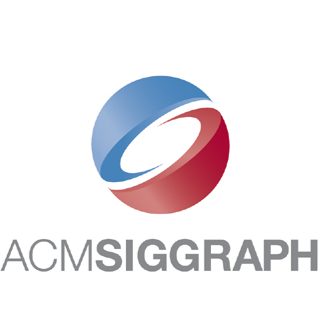SIGGRAPH 1994 论文列表
Proceedings of the 21th Annual Conference on Computer Graphics and Interactive Techniques, SIGGRAPH 1994, Orlando, FL, USA, July 24-29, 1994.
|
Is visualization REALLY necessary?: the role of visualization in science, engineering, and medicine.
Reading the fine print: what benchmarks don't tell you.
Determinants of immersivity in virtual reality: graphics vs. action.
Computer technology and the artistic process: how the computer industry changes the form and function of art.
Why is 3-D interaction so hard and what can we really do about it?
Computer graphics for architecture and design presentations: current work and trends outside the U.S.
Computer graphics, are we forcing people to evolve?
Art and technology: very large scale integration.
Information visualization: the next frontier.
Optimization - an emerging tool in computer graphics.
Exploiting networks for visualization and collaboration: no network roadblocks?
Approaches to teaching introductory computer graphics.
Production for the long haul.
Computer graphics and economic transformations.
Research frontiers in virtual reality.
The RADIANCE lighting simulation and rendering system.
Fast volume rendering using a shear-warp factorization of the viewing transformation.
Partitioning and ordering large radiosity computations.
A clustering algorithm for radiosity in complex environments.
TBAG: a high level framework for interactive, animated 3D graphics applications.
Animated conversation: rule-based generation of facial expression, gesture & spoken intonation for multiple conversational agents.
Animating images with drawings.
Planning motions with intentions.
IRIS performer: a high performance multiprocessing toolkit for real-time 3D graphics.
Method of displaying optical effects within water using accumulation buffer.
Predicting the drape of woven cloth using interacting particles.
Visual simulation of lightning.
Synthetic topiary.
The irradiance Jacobian for partially occluded polyhedral sources.
Low cost illumination computation using an approximation of light wavefronts.
Illumination in diverse codimensions.
Efficient algorithms for local and global accessibility shading.
Zippered polygon meshes from range images.
Smooth spline surfaces over irregular meshes.
Piecewise smooth surface reconstruction.
NC milling error assessment and tool path correction.
Displacement mapping using flow fields.
Using particles to sample and control implicit surfaces.
Multiresolution curves.
A generalized de Casteljau approach to 3D free-form deformation.
Free-form shape design using triangulated surfaces.
Generalization of Lambert's reflectance model.
Fast computation of shadow boundaries using spatial coherence and backprojections.
A fast shadow algorithm for area light sources using backprojection.
Polarization and birefringency considerations in rendering.
Wavelength dependent reflectance functions.
A virtual environment and model of the eye for surgical simulation.
Improving static and dynamic registration in an optical see-through HMD.
Accelerated MPEG compression of dynamic polygonal scenes.
3D position, attitude and shape input using video tracking of hands and lips.
Hardware accelerated rendering of CSG and transparency.
Frameless rendering: double buffering considered harmful.
FBRAM: a new form of memory optimized for 3D graphics.
Reflection vector shading hardware.
Priority rendering with a virtual reality address recalculation pipeline.
A model for efficient and flexible image computing.
Spreadsheets for images.
Energy preserving non-linear filters.
Rotated dispersed dither: a new technique for digital halftoning.
Efficient techniques for interactive texture placement.
Drawing and animation using skeletal strokes.
Interactive pen-and-ink illustration.
Computer-generated pen-and-ink illustration.
Multiresolution painting and compositing.
A framework for the analysis of error in global illumination algorithms.
Bounds and error estimates for radiosity.
Error-bounded antialiased rendering of complex environments.
Textures and radiosity: controlling emission and reflection with texture maps.
Artificial fishes: physics, locomotion, perception, behavior.
Hierarchical spacetime control.
Fast contact force computation for nonpenetrating rigid bodies.
Evolving virtual creatures.


